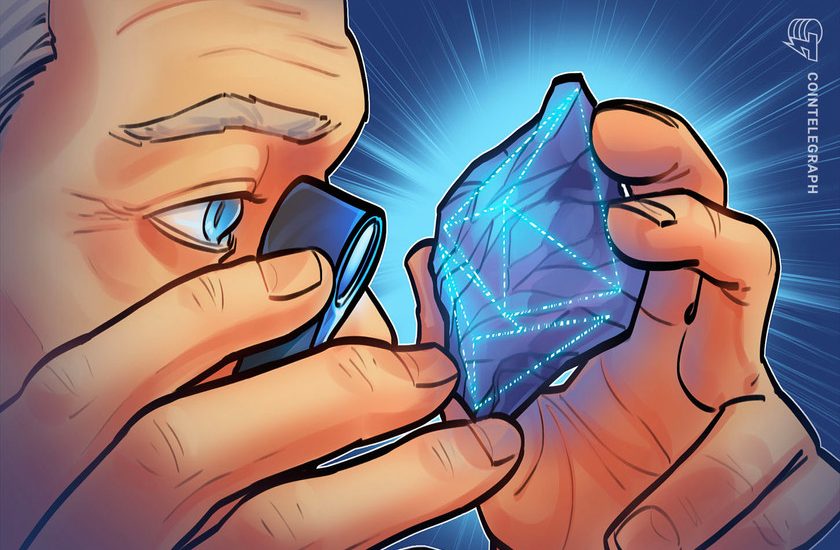- April 4, 2023
- Posted by: admin
- Category: BitCoin, Blockchain, Cryptocurrency, Investments


Ethereum’s new account abstraction features make crypto more user-friendly, but how hard is it to join the new network?
A new decentralized layer has been added on top of Ethereum to make smart accounts possible with the introduction of ERC-4337 and account abstraction — but infrastructure providers suggest it may be tricky to participate profitably right now.
ERC-4337, commonly called “smart accounts” or “account abstraction” was deployed on the Ethereum mainnet on March 1. “Smart accounts” are essentially a supercharged version of an Ethereum wallet. Although smart contract wallets already exist, they rely on centralized components. ERC-4337 changes that with a distributed network of “Bundlers” and “Paymasters.”
Under the hood, there are a few subtle but significant changes — namely the addition of the “User Intent Layer” — explained Matt Cutler, co-founder and CEO of Blocknative, a core Ethereum infrastructure provider.
According to Cutler, an Ethereum transaction today involves several discrete steps.

A user accesses their standard externally-owned account (EOA) or private key to compose a signed transaction — for example, transferring a nonfungible token (NFT) to another user.
This transaction is then sent to the public mempool — which could be described as a shared queue for transactions — to be plucked out by a “Builder” who organizes it into a “profitable block.” From there the block is proposed to a Validator who ultimately proposes and publishes it on-chain, completing the transaction.
Under ERC-4337, the new “User Intent Layer” is introduced before the current EOA step.

This additional layer allows a user to initiate more complex transactions in a single step. To make this possible, ERC-4337 introduces an “Alternative Mempool” and a network of transaction Bundlers, and along with it — a new way to earn fees.
Becoming a undler
A Bundler is a node that does a very similar job to the block “Builder.” Instead of organizing signed transactions from the public mempool to assemble a profitable block, a Bundler grabs User Operations, or userOps, from the Alt-Mempool to create the most profitable bundle which is signed and submitted to the network as a single transaction. This is all part of the newly added layer that makes smart accounts possible.
Bundlers get compensated via userOp gas fees for providing their much-needed service.
Will Account abstraction bring a billion people to crypto?
NO. Solving a problem that billions of people have will bring a billion people to crypto.
Account abstraction enables the distribution of the solution.
— John Rising (@johnrising_) March 24, 2023
While anyone can be a Bundler in theory, in reality, being a successful one might be another story, warned Cutler.
Like Builders, Bundlers are “specialized actors” made up of “relatively sophisticated development teams operating substantial computational, storage, and networking infrastructure,” he said.
“ERC-4337 is trustless and permissionless. So if you’re technically adept, by all means, you can stand up and operate your own Bundler. The challenge is Bundling is a competitive market. So you will be competing against relatively sophisticated teams that are investing heavily into being a competitive Bundler,” he said.
“Bundlers are not the sort of tooling that you just stand up, forget about and it starts printing you money. We expect Bundling to be substantially more technically sophisticated than being a validator, for instance.”
Cutler noted there are already a number of open-source bundler code repositories.
Related: Ethereum ERC-4337 ‘smart accounts’ launch at WalletCon: Account abstraction is here
There is an ongoing debate about whether ERC-4337 will have an impact on Ethereum gas fees, particularly given the increase in transaction complexity associated with the introduction of the new User Intent layer.
ERC-4337 and AA are all over the news, but with that comes a lot of misinformation. Here are some common misconceptions (and valid concerns): https://t.co/MkVoOvR44y
— ZeroDev (@zerodev_app) March 9, 2023
“While it is still too early to tell, my current expectation is that, on average, gas fees will not change all that much. If ERC-4337 has an impact, it’s going to be pretty slight — either up or down. We do not expect transaction fees to suddenly go to zero, or suddenly become 100x more expensive,” said Cutler.
Magazine: ‘Account abstraction’ supercharges Ethereum wallets: Dummies guide
